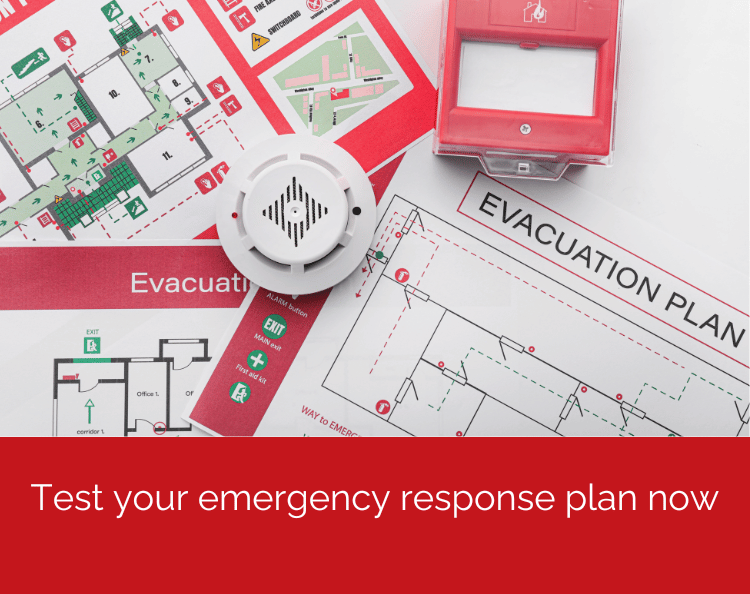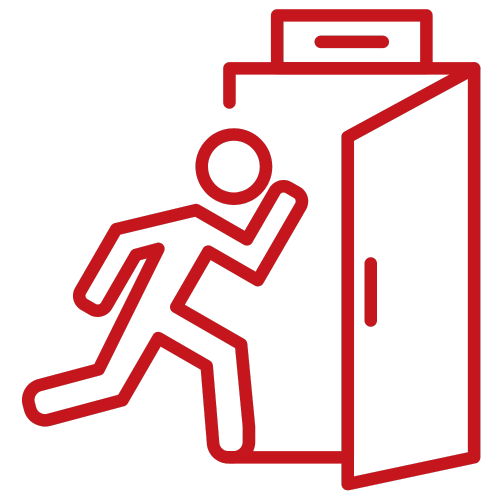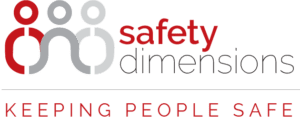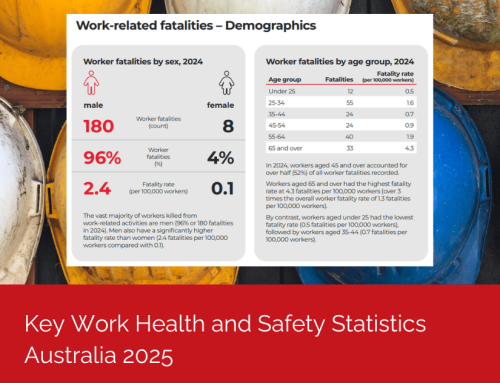
A well-crafted and thoroughly tested emergency response plan not just a regulatory requirement—it’s a core part of workplace safety and preparedness. A plan on paper is not enough; you need to know it works when it matters most.
Here’s why testing your emergency response plan is essential and how to do it effectively.
The cost of procrastination
Procrastination can be costly in emergency management. By delaying the testing of your emergency response plan, you risk being unprepared when a real crisis hits. Immediate testing and regular updates to your plan, as per standards and codes of practice, can dramatically reduce this risk, ensuring that your organisation can ensure a swift, effective response when every second counts.
Legal requirements for emergency response plans – leveraging standards and codes of practice
The Model Work Health and Safety (WHS) Act requires businesses to have an emergency response plan as part of their duty to ensure health and safety mandating that a person conducting a business or undertaking (PCBU) must ensure, so far as is reasonably practicable, the provision and maintenance of a safe working environment. This includes having an emergency plan in place to manage potential risks effectively. Additionally, the Model Code of Practice: Managing the Work Environment and Facilities specifies that an emergency plan must be prepared and maintained so it remains effective and current. This includes reviewing the plan and conducting regular testing of emergency procedures to ensure they are effective and understood by all workers.
Standards such as ISO 22320:2018 for emergency management and Standards Australia A3745-2010 Planning for Emergencies in Facilities also offer structured, recognised best practices for emergency response planning.

How do you effectively test your emergency response plan?
Once you have a written emergency response plan, these are the key steps to effectively test it:
Undertake regular drills
Simulate different emergency scenarios to test the effectiveness of your evacuation procedures and the readiness of your response teams. How did you do? Did your drill identify potential emergencies and hazards specific to your workplace and nature of work and were these part of written procedures tailored to each scenario.
Involve all employees
Engagement from every level of your organisation is crucial when testing your emergency response plan. This ensures comprehensive feedback and insights from different perspectives regarding the test. Note that from the outset emergency plans should be developed and reviewed in consultation with workers. In shared workplaces (i.e., construction sites, shared offices, or retail centres), you must consult, cooperate, and coordinate activities for preparing, reviewing, and revising emergency plans with all other persons who have a work health or safety duty in relation to the same matter, so far as is reasonably practicable.
Test for clear communication and accessibility
Establish effective communication channels and backup systems to disseminate information quickly and efficiently during an evacuation. Did plans cater to all individuals, including those with disabilities or special needs?
Review and revise
After each drill, gather feedback and conduct a debriefing session to identify what worked and what didn’t. Use this information to refine and improve your plan. Ensure changes you make are in line with Codes of Practice and the Standards.
Update training and resources
As changes are made, update training programs and resources to reflect the new plan and procedures, ensuring that all employees are up to date and you have documented the changes and the training that was delivered.
Coordination with local emergency services
Coordinate plans with local emergency services to ensure they are aware of your procedures and can provide support when needed. Including local emergency services in your drills can provide valuable insights and improve coordination during actual emergencies.
Documentation and reporting
Document all procedures and keep records of all drills and training sessions. Prepare reports on incidents and drills for future reference and improvement. This ensures continuous learning and adaptation of the emergency response plan.
Emergency response plans are not one-size-fits-all solutions since each organisation has distinct risks, layouts, hazards, and needs. By thoroughly covering each point on this checklist tailored to your needs, and ensuring you regularly review, test, and audit your plan in line with the Code of Practice and Standards, you can ensure that your emergency evacuation plan is comprehensive, up-to-date, and effective in keeping everyone in your facility safe during an emergency.
Test your emergency response plan now—don’t wait until it’s too late.

Have you considered all these areas?
Checklist for an effective emergency response plan
1. Risk assessment
- Identify potential emergency scenarios specific to your location and operations.
- Evaluate the likelihood and impact of different types of emergencies.
2. Design of escape routes and exits
- Ensure multiple escape routes are available and clearly marked.
- Check that exits are easily accessible, well-lit, and unobstructed.
- Include routes accessible to people with disabilities.
3. Assembly points
- Designate safe assembly points outside the building.
- Ensure these areas are accessible and have enough space to accommodate all employees and visitors.
4. Communication plan
- Develop a system to alert everyone (alarms, public address systems, etc.).
- Establish protocols for communicating with emergency services.
- Include procedures for informing families of employees if necessary.
5. Roles and responsibilities
- Assign specific roles to staff members (e.g., floor wardens, first aid responders) and ensure you have contingency plans for absences.
- Ensure responsibilities are clear and understood by all involved and people have practiced what they need to do to fulfil their roles effectively.
6. Special needs considerations
- Plan for the safe evacuation of individuals who have mobility, sensory impairments, disabilities, or need extra assistance during an emergency. Develop individual Personal Emergency Evacuation Plans (PEEPs) for each person with special needs.
7. Equipment and resources
- Provide necessary safety equipment like fire extinguishers, first aid kits, and emergency supplies.
- Regularly check and maintain all safety equipment, engage professionals when required.
8. Training and drills
- Conduct training sessions to familiarise employees with the emergency plan.
- Organise regular drills to practice the evacuation procedure.
- Use the feedback and data from drills to improve the plan.
9. Plan accessibility and literacy /multilingual support
- Make sure the evacuation plan is easily accessible to all employees and visitors and forms part of their site induction/sign-in procedures.
- Display evacuation maps prominently throughout the facility, where occupants and visitors are able to easily view them.
- Ensure maps and diagrams have the correct orientation when displayed for the direction of emergency exits and the location of the ‘YOU ARE HERE’ point.
- Enhance comprehension by using visual aids such as diagrams, icons, and symbols. Provide translations of key information for non-English speakers to ensure everyone can understand the procedures.
10. Review and update
- Regularly review and update the plan to reflect any changes in the building layout, personnel, or other critical factors.
- Reassess the plan following any incident to incorporate lessons learned.
11. Coordination with local emergency services
- Coordinate plans with local emergency services to ensure they are aware of your procedures and can provide support when needed.
- In addition to regular drills, consider involving local emergency services in your exercises to provide valuable insights and foster better coordination in actual emergencies.
- Include contact details for all relevant emergency services in the plan.
12. Documentation and reporting
- Document all procedures and keep records of all drills and training sessions.
- Prepare reports on incidents and drills for future reference and improvement.






